Jeep Compass still here, finds bold new path
Filed under: Weekly test drives, Autos
By John Gilbert
Jeep’s ever-expanding world of hardy, all-terrain vehicles, the descending order of size and capability has been: Grand Cherokee, Cherokee, Patriot, Compass, Renegade, Wrangler. Or something like that, with the Wrangler probably the most capable off-roader, but also the most limited as far as all-purpose highway use goes.
When the Cherokee came out, it was an instant knockout, selling like hotcakes because it would do all the things the Grand Cherokee would do on the road, and would come close to duplicating the Wrangler’s off-roading. When the Renegade came out, as a cute, squarish little Jeep, it also proved surprisingly capable and is a great example of hoe effective the collaboration between Jeep and Fiat can be.
All of which made me think that the Patriot and Compass were probably destined to be eliminated. The Compass has been a lightweight vehicle, good for commuting and moderate foul-weather usage, but nowhere near as hardy as the Cherokee above it and the Renegade below.
Shows what I know.
For 2017, Jeep not only is keeping the Compass around, it has given it an entirely new life, from every standpoint — looks, styling, and capability. In fact, some critics think the narrow-eyed Cherokee looks like a rebel among the other Jeep vehicles, and for them, the new Compass takes on a more traditional Jeep look. You could make the case that the Compass now looks like a downsized Grand Cherokee.
Recently I was able to live with a new Compass for a week of driving on the cliffside hills of Duluth and the gently winding roadway along the North Shore of Lake Superior. In traffic and up hills, the Compass performed very well, never lacking for power or performance.
Under the hood is the now-familiar 2.4-liter Tigershark 4-cylinder engine, a jewel of a powerplant originally designed in joint venture by Hyundai in South Korea and used by Mitsubishi as well as Chrysler as its base engine for compact cars. With Fiat ownership, the adaptation of that company’s brilliant MultiAir system works fantastically well on the 2.4. That system starts with dual overhead camshafts, one for intake and one for exhaust, and then eliminates the intake cam, instead using a system of oil-filled tubes that connect exhaust valves with intake valves. Everytime the exhaust valves work, they force the intake valves to work too, in computer-perfect concert.
The result is an almost-turbocharged like increase in power and performance. As tested, the 2.4 with MultiAir2 offers 180 horsepower and 175 foot-pounds of torque — easily enough to send the Compass Latitude 4X4 on its appointed rounds, aided by its 9-speed automatic transmission. Read more
New Impreza hidden in plain view
Filed under: Weekly test drives, Autos
By John Gilbert
After pulling into the Target parking lot, I dropped off my wife, Joan, and engaged in my usual parking-lot gamesmanship, wherein I circle a couple of times just to see if I can find a closer-than-reasonable open spot near the store. I don’t mind the extra walk distance; it’s just a competitive game I like to play. In this case, I found one, and nosed my “Lithium Red Pearl” compact into the slot.
There was some sort of a sports discussion on the radio, so I sat there for a few minutes. A family parked its SUV and walked past. The fellow carrying a youngster turned back once, and then a second time, for a longer look. Then he smiled and walked on.
Another couple came by, same sort of thing. Both of them paused for a second look before continuing on. Later, at another parking space in downtown Duluth, Minnesota, a couple guys walked by and stopped. “What kind of car is that?” asked one.
“It’s the new Subaru Impreza,” I answered.
“You’re kidding,” he said. “Doesn’t look like any Subaru I’ve ever seen before.”
It’s hard to recall any Subaru sedan attracting that sort of interest from passers-by. But this is the new 2017 Subaru Impreza, which is like no other previous Impreza sedan.
This one is built on an all new Subaru Global Architecture platform, upon which all things Subaru from here on will be built, because it can house everything from a sports car to an SUV. Until a company revises, restructures and reinforces its mainstay platform, consumers never have reason to realize the need for such upgrading. Read more
Atlas more than a shrug as VW’s large SUV
Filed under: Equinox, Autos
By John Gilbert
BOERNE, Texas
Volkswagen needed a large SUV much more than the marketplace needed another large SUV, and that in essence, is why the Atlas came to be designed and built as an American demands.
If you were a fan of reading Ayn Rand, you could say that VW officials in Wolfsburg, Germany, decided, “We must have a larger SUV,” and Atlas Shrugged. Sorry about that.
The point is that if a consumer family loved its succession of Volkswagen vehicles, but grew past the point where everybody could fit inside a Golf, or a Jetta, or even a Tiguan or Touareg — which will seat four comfortably and five in a squeeze — then they would have to go off and buy a Tahoe, Explorer, Honda Pilot, any of several Toyotas, or any of a couple dozen other alternatives.
Thus it made sense that as a family outgrew its VW, the Atlas would give those customers a larger VW SUV to grow into. It has three rows of seats, foldable into various configurations depending on whether you need to haul people or luggage, or major pieces of equipment.
The Atlas is the largest vehicle Volkswagen has made, and it will be built in the new Chattanooga, Tenn., plant VW built for Passat sedans. But for the first media drives, Volkswagen decided to corral us in San Antonio, from where we were driven northward to the small town of Boerne, Texas, and stationed at the Tapatio Springs Hill Country Resort.
It is a fantastic facility, with an 18-hole golf course, and enough space to hold various presentation meetings, as well as a full-scale Texas barbeque. (I like barbequed brisket, but I don’t bother with it when there are also ribs available; there were ribs available at our patio dinner, cooked as perfectly as you could want.)
After we looked over the large exterior of the Atlas, senior product manager Mark Gillies began his presentation by explaining why the company picked the vast expanse of Texas for the intro drive. “The Atlas is big, and it looks right at home with all the big SUVs down here,” he said. Other officials added that it is designed, tailored and built in the U.S. “to fit American families.”
The Atlas looks the part, but the secret of success in that hotly competitive segment is how the vehicle feels, how it drives, and how flexible its game plan is executed. The Atlas is built on VW’s MQB platform, which is versatility personified. The entire Golf family, Jetta, Passat and Tiguan all share versions of that underpinning. Read more
As biggest Mazda, CX-9 fills key niche
Filed under: Weekly test drives, Autos
An automobile company is only as good as its customers determine. If its cars are too big, too small, too bulky, too stodgy, well, you can go down the road a ways and find a company that might more closely fit what you’re looking for.
Mazda, meanwhile, a comparatively small Japanese company, must be eavesdropping. Maybe there’s a wiretap. Or at the very least, they’ve been reading my mail. Because Mazda continues to make vehicles that impress me; no weaknesses, just assets. It holds over to their array of SUVs, too. I thought the first CX-9 was too big and a little ungainly, while the CX-7 was sporty and quick, but not economical enough.
When Mazda reorganized its engine and drivetrain manufacturing, and restyled its sedans, it came up with the CX-5, a midsize SUV that handles like a sports car and is perfectly compact. In the last year, Mazda brought out the CX-3, which is smaller and more compact, to the point that even I, who prefers as compact as you dare, find the back seat pretty cramped, if you intend for any humans more than 12 years old to ride back there.
Meantime, before redesigning its outstanding sedans — the compact Mazda3 and the midsize Mazda6 — the company came out with a completely redone CX-9 a year ago. Its largest SUV will satisfy the most discerning fancier of larger SUVs, who like to complain about compact crossovers being too small.
We got a chance to test-drive a 2017 Mazda CX-9, and my wife Joan, agreed with me about every characteristic of the vehicle. It was stunning to look at, in “snowflake white pearl,” which made the vehicle fairly glimmer in any light, and even stand out at nighttime.
The look of the CX-9 also impresses, because it has a bold and forceful open grille, with the top protruding a bit in an aggressively sporty manner. From the side, the silhouette makes a striking pose also, looking lower than it is, and sleek from front to rear, with all the contours and grooves fitting in well with the sometimes mystical concepts Mazda has for its flowing design.
Under the hood, Mazda’s jewels of technology prevail in every model, since the company went to its holistic “Skyactiv” design for creating engine that unify intake, exhaust, combustion chambers and everything else, internally as well as externally.
For those whose eyes glaze over when you talk about such technicalities, suffice it to say that Mazda gets more power and more fuel economy out of a given engine displacement than any other company, in normally aspirated form. Read more
Ram Power Wagon lives up to lofty image
Filed under: Weekly test drives, Autos
By John Gilbert
All right, we’ve established a few ground rules for large pickup truck wars, which have escalated to the point where the full-size trucks are so huge, the new breed of midsize trucks seems more than large enough. But if we did have to have a monster truck truck-off, so to speak, what would we pick to win?
That’s pretty impossible to say, because truck wars have such indelibly inscribed sets of favorites you’re sure to offend somebody when you pick something different. More likely, everybody makes their contribution.
Having previously reported on the Ford monster dualie F350, it’s hard to find anything bigger or bossier. The F250 Super Duty, meanwhile, is a monster that could be a candidate for king of the reasonably-sized monster trucks. And Ford’s Raptor is a specially built performance king for serious off-road duty with an ultra-macho on-road presence.
None of that prepares us for today’s topic, however. Which would be Dodge. Now Dodge, for example, gets no choice any more because Dodge trucks are no longer Dodge trucks; they are Rams. We will accept as a valid candidate the newest and most monster-like Ram of them all, the “Ram 2500 Power Wagon Crew Cab 4X4.” Got all that?
If a Power Wagon needs power, how about a 6.4-liter Hemi V8? This is the basic engine that powers the Hellcat Charger and Challenger models, with 707 tire-screeching horsepower, only this one is normally aspirated, and it is beefed up for heavy-duty trucking.
If you’re taking a group to see, for example, a Monster Truck competition, the Ram Power Wagon would be the ideal conveyance.
The heavy-duty grille rollbars add to the impression that you’re ready for some heavy use. And imbedded horizontally into the front bumper is a small cable with a little tag on the end. It is a 12,000 pound winch. Pull the tab and it uncoils. I figure you could use this thing to drive along after a blizzard and pull your neighbor’s semi out of a ditch, if necessary.
This monster is, indeed, a monster, and it even has a feature or two that puts it onto a higher monster plateau than the huge Fords. It is a “bad”-looking truck, in the manner of current vernacular where “bad” means “real good,” or, as humans used to say, “cool.” Only the Ford Raptor rivals the visual impact of the Power Wagon. Read more


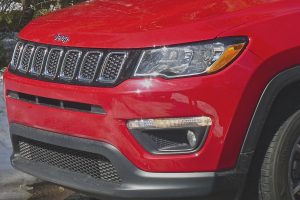
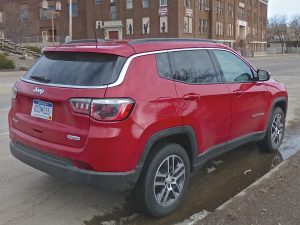
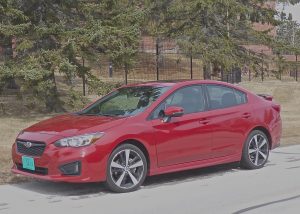
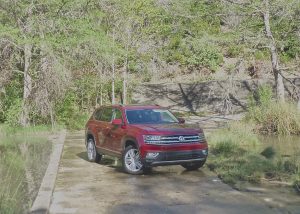
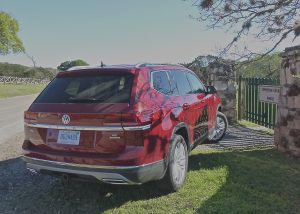
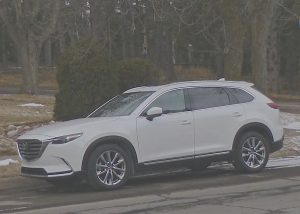
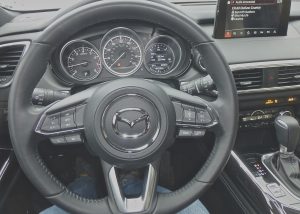
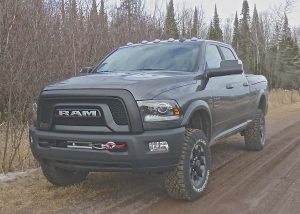
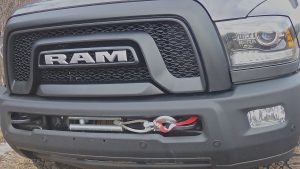
 John Gilbert is a lifetime Minnesotan and career journalist, specializing in cars and sports during and since spending 30 years at the Minneapolis Tribune, now the Star Tribune. More recently, he has continued translating the high-tech world of autos and sharing his passionate insights as a freelance writer/photographer/broadcaster. A member of the prestigious North American Car and Truck of the Year jury since 1993. John can be heard Monday-Friday from 9-11am on 610 KDAL(www.kdal610.com) on the "John Gilbert Show," and writes a column in the Duluth Reader.
John Gilbert is a lifetime Minnesotan and career journalist, specializing in cars and sports during and since spending 30 years at the Minneapolis Tribune, now the Star Tribune. More recently, he has continued translating the high-tech world of autos and sharing his passionate insights as a freelance writer/photographer/broadcaster. A member of the prestigious North American Car and Truck of the Year jury since 1993. John can be heard Monday-Friday from 9-11am on 610 KDAL(www.kdal610.com) on the "John Gilbert Show," and writes a column in the Duluth Reader.